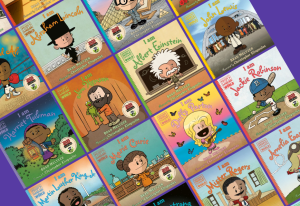Is a puzzlement!
Many librarians might be wondering why a book salesman would write a blog about book selection for school and public libraries. I mean, most of you certainly see “people like me” as your nemesis – I’m a guy who is looking to waste your valuable time to make some money. (Well, yeah, I guess there is a bit of that in my motivation…) But I can honestly say that libraries genuinely interest me! I’ve spent my whole professional life (42 years in book sales) watching librarians select, purchase, (occasionally) weed and maintain book collections. It’s fascinating! Some librarians are simply superb at this most scientific part of their work, and others are, well, “meh” (for lack of a better word).
But without a doubt, a fine library collection has been proven to be one of the greatest tools that teachers and whole cities have at their fingertips. So, let’s spend our time here talking about the most perplexing aspects of being a librarian: How do we maintain a valuable library? Just as importantly, how can we make kids use it??
You might recognize the title of this article as a song from the great Rodgers and Hammerstein musical “The King and I.” King Mongkut sees his problem clearly – he needs to be sure of facts that he thought he already knew. There is a lot of that going on in the library world! Many middle and high school librarians refuse to purchase nonfiction because the kids won’t read it! It’s a waste of money! And yet…
The National Council of Teachers of English recently (January 2023, as a matter of fact) published a “Position Statement on the Role of Nonfiction Literature (K-12).” Likewise, this is the basis for many state ELA Standards! Their point is to raise the use of nonfiction libraries among faculties and their students. In their overview they say the following:
Contemporary nonfiction addresses historical silences; explores historic and contemporary events rooted in racism, oppression, and violence; and highlights courageous trailblazers and organized groups working toward societal transformation and liberation. It presents cutting-edge research, offering readers not just settled information, but access to emerging understandings at the vanguard of scientific knowledge and exploration.
Nonfiction empowers young people in the face of current and emerging challenges locally and globally, such as racial, cultural, social, and economic injustice, censorship and disinformation, and the climate crisis. In the urgency of this moment, nonfiction for young people has never been more vibrant or vital.
All of this is frightening! Haven’t we only recently heard that we shouldn’t teach students things that they don’t need to learn? Understanding “racism, oppression and violence” might lead our children to harbor feelings of guilt – maybe lead them to disagree with their parents’ opinions! Egads – this used to be the teacher’s job! Now we are facing a (Brave?) New World where books are banned simply for stating the truth. Is a puzzlement!
We’re facing tons of questions – It’s been several generations since databases became the primary method for research. How do we keep kids from simply cutting and pasting, or misusing these tools? What is the overall effect on writing skills? How does this affect genuine research? For the younger kids, it’s a matter of maintaining interest in learning, in an age of social media. And I haven’t even touched on AI or the effects of “fake news.”
I’d like to use this space for the discussion of librarianship and the best use and selection of nonfiction. Please feel free to discuss issues of importance to libraries, intellectual freedom, as well as ways that other librarians might implement standards – to make libraries more than just a place to get the latest fantasy book to read. Let’s bring nonfiction back to its proper place in education.
Please also take the time to look through some of my selected merchandise. This is my “retirement hobby” – I’d like to keep it going!
David White
DJWBookworm








